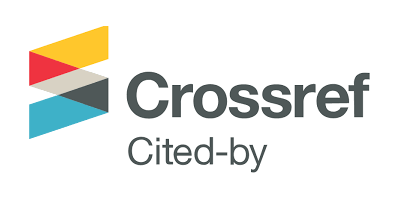Policy of The Government of Aceh in The Placement of Migrant Workers Abroad
DOI:
https://doi.org/10.29103/micolls.v2i.119Keywords:
Policy, , Government of Aceh, Migrant Workers, abroadAbstract
The policy of the Government of Aceh in the Placement of Overseas Migrant Workers needs to be carried out in an integrated system involving the Regency/City Regional Government and the community, according to the mandate of Article 18B of the 1945 Constitution, Article 174 paragraph (5), and Article 175 paragraph (4) of the Law No. 11 of 2006 concerning the Government of Aceh, Qanun Number 7 of 2014 concerning Manpower, and the issuance of Governor of Aceh Regulation Number 112 of 2016 concerning Position, Organizational Structure, Duties, Functions and Work Procedures of the Aceh Manpower and Mobility Office. This research uses a qualitative approach, which is research that stems from an inductive mindset, based on objective observation, participation in a social phenomenon, which is related to objects of social science, economics, culture, law, and other social sciences, and observations in directed at certain individuals or social groups based on certain goals. With the consideration of wanting to study the Aceh Government's Policy on the Placement of Overseas Migrant Workers. Conclusions and Suggestions, Aceh Government Policy in Placement of Overseas Migrant Workers implemented through the Acehnese Manpower and Population Mobility Service has made several policies but good management policies need to be implemented so that they are more dynamic and implementable, and can open access and motivate candidates Migrant workers in regency/municipality areas, need evaluation, improvement in administration and service quality to support a better overseas placement program for migrant workers, because based on existing rules and policies, all prospective migrant workers cannot be accommodated. facilitating the placement of foreign workers.
References
A. Michael Huberman, Analisis Data Kualitatif, Jakarta. UI Press. 2007.
Anis Hidayah, Wahyu Susilo, Muliayadi, Selusur Kebijan Minus Perlidungan Buruh Migran Indonesia, Migrant CARE, Jakarta, 2013
Bismar Nasution dan Mahmul Seregar, Bahan Kuliah Teori Hukum, Program Studi IlmuHukum Sekolah Pascasarjana USU. 2006
Budi Winarno. 2007. Kebijakan Publik Teori & Proses. Yogyakarta:Media Pressindo
Bustari Muktar, dkk., Bank dan Lembaga Keuangan Lain, Jakarta, Kencana, 2016.
Fatkhul Muin, Perlindungan Hukum Terhadap Tenaga Kerja Indonesia (Tinjauan Terhadap UU No. 39 Tahun 2004 tentang Penempatan dan Perlindungan Tenaga Kerja Indonesia) Jurnal Cita Hukum. Vol. II No. 1 Juni 2015. ISSN: 2356-1440
Fatkhul Muin, Perlindungan Hukum Terhadap Tenaga Kerja Indonesia (Tinjauan Terhadap UU No. 39 Tahun 2004 tentang Penempatan dan Perlindungan Tenaga Kerja Indonesia) Jurnal Cita Hukum. Vol. II No. 1 Juni 2015. ISSN: 2356-1440
Supardan Modeong, Teknik Perundang-undangan di Indonesia,(Jakarta: Perca, 2003.
Munir Fuadi, Dinamika Teori Hukum, Bogor: Ghalia Indonesia, 2007
Suhaidi, Bahan Kuliah Teori Hukum, Program Studi Ilmu Hukum Sekolah Pascasarjana USU.2007
Noeng Muhadjir, Ilmu pendidikan dan Perubahan Sosial. Teori Pendidikan Pelaku Sosial Kreatif.Yogyakarta : Raka Sarasin, th.2000.
Budi Winarno. Kebijakan Publik Teori & Proses. Yogyakarta:Media Pressindo, 2007
Bambang Sugono, Metode Penelitian Hukum, jakarta, Ghalia Indonesia, 1990.
Bustari Muktar, dkk., Bank dan Lembaga Keuangan Lain, Jakarta, Kencana, 2016.
Qamar, Nurul, Metode Penelitian Hukum (Legal research Methods), Jakarta; CV. Sosial Politic Genius.
Zainuddin Ali, Metode Penelitian Hukum, Jakarta, Sinar Grafika, 2014. H
Suyitno, Metode Penelitian Kualitatif: Konsep, Prinsip dan Oprasionalnya, Jakarta; Academia Pustaka,2018.
Soejono Soekanto, Pengantar Penelitian Hukum, Jakarta. UI Press. 2010.
Sudarso, Metode Penelitian Filsafat, Jakarta, Raja Grafindo Persada. 2002.
Sugiyono, metode Penelitian Kuantitatif Kualitatif dan R & D, cet ke-23. Bandung , Alfabeta. 2006.
Fajri, https://disnakermobduk.acehprov.go.id/index.php/news/read/2021/02/06/88/ta hun-2020-jumlah- pengangguran-di-aceh-mencapai-167-ribu-orang.html, di akses 14 April 2021
Fitroh Hanrahmawan, Revitalisasi Manajemen Pelatihan Tenaga Kerja, Jurnal Administrasi Publik, Volume 1 No.1 Thn. 2010.
Nasution, Arf, Orang Indonesia di Malaysia Menjual Kemiskinan Membangun Identitas, Yogyakarta, Pustaka Pelajar. 2001.
Irvani, Seksi Pemagangan dan Peningkatan Produktifias , Dinas Tenaga Kerja dan Mobilitas Penduduk Aceh,wawwancara tgl.22 Oktober 2021
Teuku Kemal Fasya, Daya Pemerintahan Gampong pada Masa Pandemi COVID-19 di Kabupaten Aceh Utara dan Kota Lhokseumawe Aceh, Jurnal JTA (Puslatbang KHAN) LAN RI. 2020. Hlm. 12. Baca juga Geertz, Clifford, Involusi Pertanian, Jakarta; Bharatara K.A, 1976.
Wahid Erawan, Strategi Peningkatan Kwalitas Pemberangkatan Pekerja Indonesia, Jurnal Comm-Edu, Universitas Garut, 2021. Vol. 4 (1). ISSN: 2622-5492.
Noeng Muhadjir, Ilmu pendidikan dan Perubahan Sosial. Teori Pendidikan Pelaku Sosial Kreatif.Yogyakarta : Raka Sarasin, Tahun 2000,
Irvani, Seksi Pemagangan dan Peningkatan Produktifias , Dinas Tenaga Kerja dan Mobilitas Penduduk Aceh, wawancara tgl. 06 Oktober 2022
Satrio Pangarso Wisanggeni, Kompas, https://www.kompas.id/baca/ekonomi/2020/07/03/digitalisasi-terakselerasi- pandemi-covid-19-microsoft-berikan-pelatihan-gratis-untuk-para-pencari-kerja/
Undang-Undang Nomor 18 Tahun 2017 tentang Perlindungan Pekerja Migran Indonesia
Undang-Undang Dasar Republik Indonesia Tahun 1945
Undang-Undang Nomor 18 Tahun 2001 tentang Otonomi Khusus
Undang-Undang Nomor 13 Tahun 2003 tentang Ketenagakerjaan
Undang-Undang Nomor 11 Tahun 2006 tentang Pemerintahan Aceh
Undang-Undang Nomor 39 Tahun 2004 tentang Penempatan dan Perlindungan Tenaga Kerja di Luar Negeri.
Qanun Nomor 7 Tahun 2014 tentang Ketenagakerjaan
Peraturan Gubernur Aceh Nomor 112 Tahun 2016 tentang Kedudukan, Susunan Organisasi, Tugas, Fungsi dan Tata Kerja Dinas Tenaga kerja dan mobilitas Penduduk Aceh
Downloads
Published
Issue
Section
License
Copyright (c) 2022 Muhibbudin Muhibbudin, Nasrianti Nasrianti

This work is licensed under a Creative Commons Attribution-ShareAlike 4.0 International License.
Authors retain the copyright and grant the proceeding the right of first publication. This work is licensed under a Creative Commons Attribution-ShareAlike 4.0 that allows others to share the work with an acknowledgement of the Creative Commons Attribution-ShareAlike 4.0 that allows others to share work with an acknowledgement of the works authorship and initial publication in this proceeding.
All articles in this proceeding may be disseminated by listing valid sources, and the article's title should not be omitted. The content of the article is liable to the author.
Authors are able to enter into separate, additional contractual arrangements for the non-exclusive distribution of the proceeding's published version of the work (e.g., post it to an institutional repository or publish it in a book), with an acknowledgement of its initial publication in this proceeding.
Authors are permitted and encouraged to post their work online (e.g., in institutional repositories or on their website) before and during the submission process, as it can lead to productive exchanges and earlier and greater citation of published work.
In the dissemination of articles, the author must declare the Proceedings of Malikussaleh International Conference on Law, Legal Studies and Social Science (MICoLLS) as the first party to publish the article.






